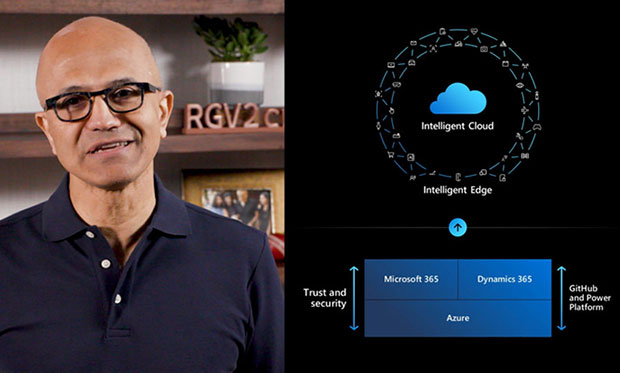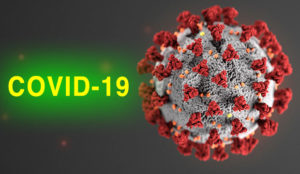Developers are the driver of innovation in the world we live in today, said Scott Guthrie, EVP of the Microsoft Cloud+AI Group, in his presentation during the virtual Build 2020 conference held Tuesday.
New features in Azure aim to make development easier and faster, he added.
“With Azure, we built an end-to-end cloud that enables developers to focus on building applications and not have to worry about the underlying infrastructure the applications run on,” Guthrie pointed out.
Azure “is the first cloud with limitless data and analytics capabilities that can deliver a cloud-native data estate for every organization,” said Microsoft CEO Satya Nadella. “We literally rebuilt and reimagined the cloud data estate using the memory data hierarchy of the cloud.”
With Azure, GitHub, and Visual Studio, “we’re building the most complete toolchain for developers,” Nadella said. “Fifty million developers use GitHub and they’re more active than ever. Visual Studio is the most popular code editor.”
Other tools will be added to this toolkit, making the concept of a complete tool fluid, remarked Rob Enderle, principal analyst at the Enderle Group.
There are “plenty of other toolchains,” noted Holger Mueller, principal analyst at Constellation Research.
“You have Google, Oracle, Java, IBM,” he told the E-Commerce Times.
Still, Azure “is arguably one of the strongest tool sets available on any cloud platform,” Enderle said.
New Azure Capabilities
Azure lets developers focus on applications and not the infrastructure, said Jeff Hollan, Microsoft’s principal program manager for Azure Serverless. “We have over 1,000 new features and improvements — everything from Kubernetes to AI. We also have end-to-end solutions so you can partner with non-traditional developers.”
Microsoft’s Azure-related announcements included updates for security, storage, and analytics; .NET 5 Preview 4; ASP.NET Blazor support for WebAssembly; .NET MAUI; Project Bonsai and Project Moab; Azure VM Image Builder Service; new Azure IoT Central features; new Azure extensions for Visual Studio Code; and Static Web Apps.
Serverless capabilities are coming soon to Azure Cosmos DB, Hollan announced, which will let users run even spiky workloads efficiently.
They have an autoscale feature to instantly scale databases without increasing latency and still provide 99.999 percent availability.
Azure Cognitive Services now offers an Apprentice Mode for Personalizer, which learns customer preferences in real time when run alongside existing solutions.
Azure Static Web Apps provide serverless hosting for dynamic scaling, GitHub native workflow, and unified hosting and management, said Amanda Silver, Microsoft’s corporate VP of products for the Visual Studio family and developer tools.
“All you need to do is check in your code, fill and deploy,” she said. “Your code is deployed globally in minutes.”
Azure Synapse Link, which enables real-time data analytics, is “the industry’s first cloud-native implementation of hybrid transaction analytical processing,” said Rohan Kumar, Microsoft’s corporate VP, Azure Data Engineering.
“As soon as a transaction is recorded in your operational database, it will be available for analytics in seconds,” he said.
Azure Synapse Link is available in Azure Cosmos DB now. It will be extended later to Microsoft’s other operational database services.
New capabilities in Azure Machine Learning will enable developers to build AI that can be trusted, Kumar said.
The World’s Computer
Microsoft also announced one of the world’s top five publicly disclosed supercomputers at Build, built in collaboration with, and exclusively for, OpenAI. Its infrastructure will be available to train extremely large AI models.
This was “the biggest announcement” in the Azure program at Build 2000, Enderle told the E-Commerce Times, “because it could be instrumental in both finding a cure for COVID-19 and preventing the next pandemic.”
More than 95 percent of the Fortune 500 use Azure, Nadella pointed out.
“We’re building Azure as the world’s computer,” he said.
Microsoft “believes they are providing the world decentralized access to compute via the cloud,” observed Ray Wang, principal analyst at Constellation Research.
“The reality is, this is also centralized compute, as AI and graphs play a key role in determining the signal intelligence in the future,” he told the E-Commerce Times. “Basically, everyone plugs in when it makes sense that aggregate information and insight, with permission and privacy, becomes the world’s brain.”
Microsoft has 61 data center regions, which is more than Amazon and Google, Nadella pointed out, and Azure is “the only cloud that extends to the edge.”
Microsoft does have the most data center locations, driven by Office365 and data residency requirements, said Constellation’s Mueller, “but when you count redundancy — more than one data center in one location — AWS has the most and Google is the most consistent.”

























































